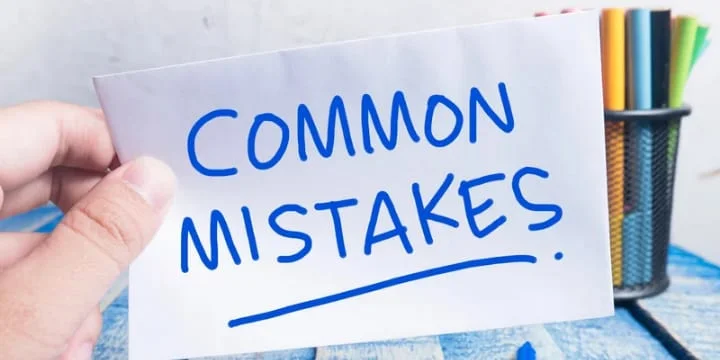Ever wondered why some articles seem to float effortlessly to the top of Google search results while others languish in obscurity? It’s no accident. The secret sauce is SEO content creation. Crafting content that ranks high on search engines isn’t just about stuffing in keywords; it’s a strategic blend of research, structure, and quality. In this post, we’re going to walk you through the steps to create content that not only engages your audience but also makes search engines sit up and take notice.
What is SEO Content Creation?
SEO content creation is the art of writing content that serves both your audience and search engines. It’s more than just putting words on a page; it’s about crafting meaningful, relevant content that answers the questions people are asking online. This process involves researching the right keywords, structuring your content for readability, and ensuring that search engines can easily index and rank your content.
Unlike regular content writing, where the focus might be solely on creativity or storytelling, SEO content creation requires a strategic approach. Every element of your content—from the title and headings to the images and links—plays a role in how well it ranks. The goal is to create content that not only reads well but also aligns with search engine algorithms, boosting its chances of appearing at the top of search results.
Why is SEO Important in Content Creation?

SEO is the backbone of successful content creation in the digital age. Imagine writing the most insightful blog post, only for it to be buried on page five of Google search results. Without SEO, even the best content can go unnoticed.
- Drives Organic Traffic: SEO helps your content get discovered by people actively searching for topics you’re writing about. When your content ranks higher on search engines, it naturally attracts more clicks, leading to increased traffic without relying on paid advertising.
- Boosts Visibility and Authority: High-ranking content not only gains more views but also builds your authority in your niche. People tend to trust and value content that appears on the first page of search results, associating it with credibility and expertise.
- Enhances User Experience: SEO isn’t just about pleasing search engines—it’s also about improving the experience for your readers. Proper SEO practices, like clear headings, fast-loading pages, and mobile optimization, make your content more accessible and enjoyable for users, which in turn helps improve your rankings.
In short, SEO ensures that your content reaches its intended audience, driving growth and establishing your presence online.
Step-by-Step Guide to Crafting SEO-Friendly Content
Creating content that ranks high on search engines involves a series of deliberate steps. Let’s break down the process:

Step 1: Conducting Keyword Research
Before you start writing, you need to know what your audience is searching for. Keyword research is the foundation of SEO content creation. Tools like Google Keyword Planner, Ahrefs, or SEMrush can help you identify the keywords your target audience is using. Focus on finding a balance between high search volume and low competition. Your primary keyword should be central to your topic, while secondary keywords can support and add context to your content.
Step 2: Optimizing Content Structure
The way you structure your content is just as important as the content itself. Use clear and descriptive headings (H1, H2, H3) to organize your text. Search engines use these headings to understand the hierarchy of your content. Additionally, include a compelling meta title and meta description to summarize your content for search engine results pages (SERPs). This not only helps with SEO but also improves click-through rates.
Step 3: Writing High-Quality Content
Quality is king when it comes to SEO. Your content should be informative, engaging, and valuable to your readers. Aim to provide comprehensive answers to the questions your audience is asking. Incorporate your primary keyword naturally throughout the text—especially in the introduction, headings, and conclusion—but avoid keyword stuffing. Balance SEO with readability to keep your audience engaged.
Step 4: On-Page SEO Techniques
On-page SEO involves optimizing individual elements within your content. Here’s what to focus on:
- Internal Linking: Link to other relevant pages on your website to help search engines understand the context and value of your content.
- Image Optimization: Use high-quality images with descriptive file names and alt text that include your keywords. This helps with both SEO and accessibility.
- Mobile-Friendliness: Ensure your content is easily readable on mobile devices. Google prioritizes mobile-friendly content, so this step is crucial.
Step 5: Monitoring and Updating Content
SEO doesn’t end once your content is published. Regularly update your content to keep it relevant and accurate. Use tools like Google Analytics and Search Console to track performance, identify keywords that are driving traffic, and spot areas for improvement. Updating your content with new information or additional keywords can give it a fresh boost in search rankings.
Common Mistakes to Avoid in SEO Content Creation
Even with the best intentions, it’s easy to make mistakes in SEO content creation that can hinder your rankings. Here are some common pitfalls to watch out for:

1. Overstuffing Keywords
While keywords are essential for SEO, overusing them—known as keyword stuffing—can do more harm than good. This not only disrupts the natural flow of your writing but also signals to search engines that you’re trying to manipulate rankings. Focus on using keywords naturally and sparingly, ensuring your content remains readable and engaging.
2. Ignoring Mobile Optimization
With the majority of internet traffic coming from mobile devices, ensuring your content is mobile-friendly is crucial. Neglecting this can lead to a poor user experience, higher bounce rates, and ultimately lower rankings. Always check that your content displays well on smartphones and tablets, with responsive design and fast loading times.
3. Neglecting Content Updates
SEO is not a one-time effort. Failing to update your content regularly can cause it to lose relevance and slip in rankings. Keep your content fresh by revisiting it periodically to add new information, update statistics, or refine your keywords. This shows search engines that your content is up-to-date and valuable.
Avoiding these mistakes will help ensure that your content is not only optimized for search engines but also provides a seamless experience for your readers.
Additional Tips and Resources
To take your SEO content creation to the next level, here are some additional tips and resources:

1. Stay Updated on Emerging SEO Trends
SEO is constantly evolving, with search engines like Google frequently updating their algorithms. Stay informed about the latest trends, such as voice search optimization and AI-driven content strategies. Following SEO blogs, attending webinars, and participating in industry forums can help you stay ahead of the curve.
2. Utilize SEO Tools for Efficiency
Incorporating the right tools can streamline your SEO efforts. Tools like Yoast SEO (for WordPress users) can help optimize content directly in your CMS, while Ahrefs and SEMrush offer comprehensive features for keyword research, competitor analysis, and backlink tracking. These tools provide valuable insights that can guide your content strategy.
3. Learn from High-Ranking Content
One of the best ways to improve your SEO content is by analyzing content that already ranks well. Look at the top results for your target keywords—what are they doing right? Pay attention to their content structure, keyword usage, and overall tone. You can apply similar techniques to your own content while adding your unique perspective.
4. Experiment with Different Content Formats
Not all content needs to be text-based. Infographics, videos, and podcasts are excellent ways to diversify your content and cater to different audience preferences. These formats can also rank well in search results, especially when optimized with the right keywords and descriptions.
5. Consider Long-Form Content
Longer content—typically over 1,500 words—tends to perform better in search rankings because it’s more likely to provide comprehensive information. However, make sure the content is well-organized and maintains quality throughout. Breaking up long-form content with headings, bullet points, and visuals can enhance readability.
Conclusion
Crafting content that ranks high on search engines is a blend of art and science. It requires understanding your audience, using the right keywords, and structuring your content for both readability and search engine optimization. By following the steps outlined in this guide and avoiding common pitfalls, you can create content that not only resonates with your readers but also climbs the search engine rankings.
Remember, SEO is an ongoing process. Keep learning, experimenting, and refining your strategies to stay ahead in the ever-changing digital landscape.













